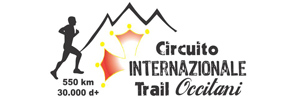From Sisteron to Pont-St-Esprit, in the land of the Mistral
189,5 km 9 days
The Alps gently slope down to become the Pre-alps. You cross the southern reliefs of the massif of the Baronnies: the Montagne de Lure and Mont Ventoux. The alpine forests are quitted for very different environments, from barren pastures eroded by ravines to oak woods and to the gorgeous forests of Aleppo pines of Mont Ventoux. All the paths are easy, their difference in altitude and levels of difficulty being much simpler than the alpine ones. The itinerary follows ancient pilgrimage walks and devotional routes. The walk intersects the Camino de Santiago, of which Sisteron was a junction point. The countryside is embellished by chapels and rural churches in the Provencal Romanesque style, built using the calcareous stone which is the symbol of this sunny and windswept land. It is a landscape of bright colours, from the violet of the lavender, to the turquoise of shutters, from the warm colour of sun bleached pastures, to the ochre of houses’ plaster and the dark red of pan tiles on their roofs. And all this under the crystalline blue of a sky swept clear by the mistral wind. This is the Provence narrated by Frédéric Mistral and Jean Giono, where the songs of cicadas resonate and where towns are as important as the surrounding nature. There are towns rich in history, such as Vaison-la-Romaine, Malaucène, Sault, with historical centres worth a visit to admire their monuments, but also small settlements, such as Montbrun-les-Bains or Flassan, cloistered around their treed squares, their fountain and benches inviting a halt. The last part of this step descends to lower hilly altitudes, towards the great hollow of the Rhone valley. The view here is of lavender cultivation and of «Côte du Rhône» AOC vineyards. Going along easy rural pathways, it is possible to cross cru vineyards which are renowned worldwide for the wines produced. The vines are low, like miniature trees, almost at the ground level to be protected from the wind. The soil is composed of round limestone pebbles, which are alluvium deposits from the great river and are useful to store the sun’s heat during the day to release it in the night to fight the cold of the dry mistral wind, blowing from the north, but which, unexpectedly, carries along Mediterranean scents and colours.
Stages:
12 – From Sisteron to St Vincent Sur Jabron
13 – From St Vincent sur Jabron to Montfroc
14 – From Montfroc to Montbrun-les-Bains
15 – From Montbrun-les-Bains to Sault-en-Provence
16 – From Sault-en-Provence to Flassan
17 – From Flassan to Malaucène
18 – From Malaucène to Vaison-la-Romaine



